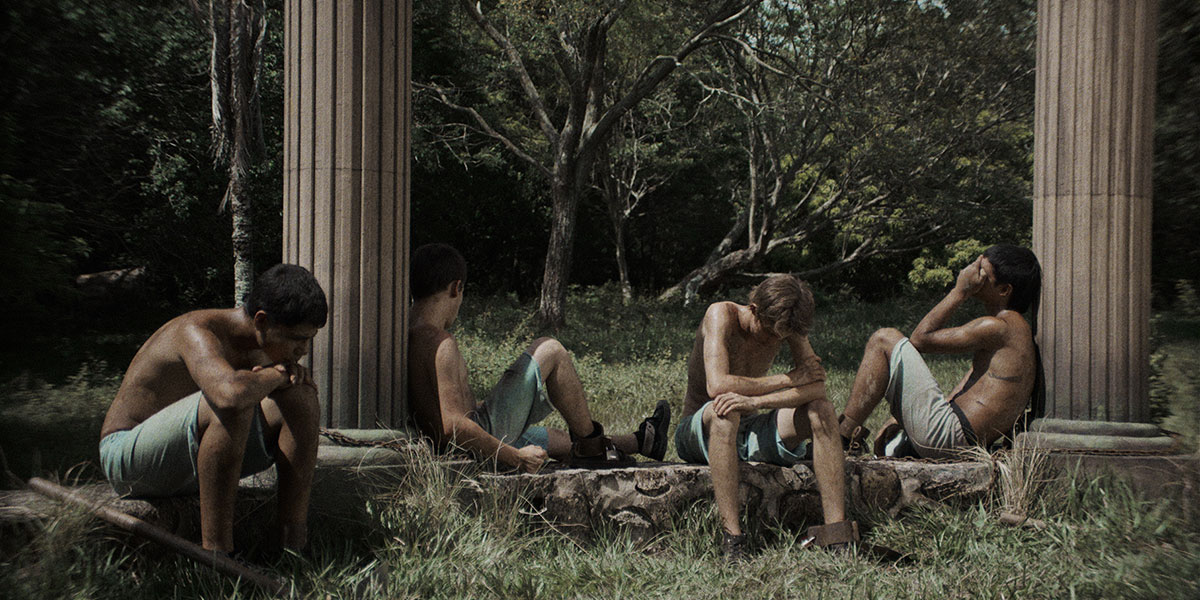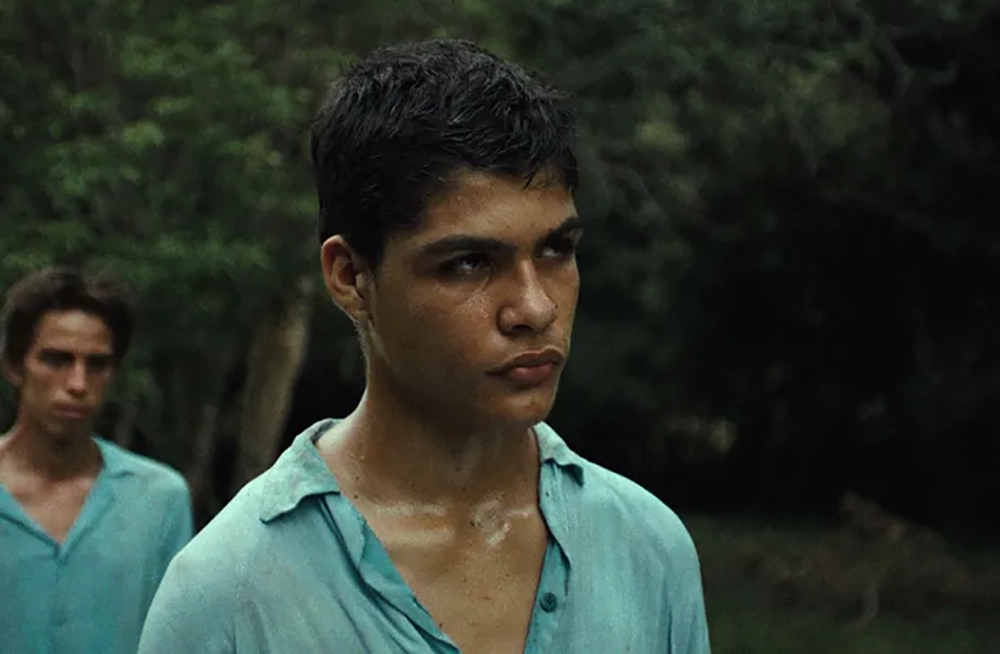I am a big fan of Alejandro Landes’ “Monos,” a Spanish-language film that is breathtaking in its visuals and about a group of eight youths tasked with guarding a hostage and a milk cow on a mountaintop, just a troupe on their own. When I heard the concept for Colombia’s “La Jauría,” a film that played the ‘Contemporary World Cinema’ programme at TIFF, I had to check it out.
In Andrés Ramírez Pulido’s “La Jauría,” a group of teenagers are forced to take part in an experimental prison. It is deep in a tropical forest, where they spend their days cleaning a property in desolate heat, being rehabilitated with difficult work. This film strives in its coming-of-age and showing the evolution of certain characters, especially with its lead Eliû (Jhojan Stiven Jiménez). He’s one of few emotions other than intense guilt. At the film’s opening, he finds himself and El Mono (Maicol Andrés Jiménez) on a drug-fueled bender, fleeing on motorcycle from a scene of a murder.
This shapes the story, and the real motive for the killing is the root of Eliû’s trauma. The only two kids of character “importance,” with all due respect to the others, are Eliu and El Mono. Most of the other characters are there to fill in the bigger picture, as they all ask each other which prison network they were sent from to end up in this tropical forest. An interesting behind-the-scenes fact is that the director and his team auditioned over 2,000 kids to fill these roles. Even if the secondary ones don’t have a lot of dialogue, they thrive in authenticity.
A Bold Film that Details Trauma and Violence
One such authentic moment is Jhojan Stiven Jiménez as Eliû tries to stay in character as a bug crawls on his face. It’s a scene meant to cause shame—head down, avoiding eye contact—but he swats at a bug that’s landed on his face during filming. It’s these moments that show the film’s authenticity. And how quickly the characters start sweating in these scenes shows how hot of a shoot this must have been.

“La Jauria” acts as a fable to Central American youth that drinking and partying will inevitably lead to violence. And the fascinating part of the film is exactly how it shapes violence. We spend patient days of intense labour with the kids, as they sometimes indulge in improvised banter or trash-talking. However, when violence happens, the camera movement is frantic and the violence happens suddenly. They’re sudden decisions that have an impact in trauma. This is both on the one delving out the violence, but especially on the one receiving.
That’s the boldness of the film—is that it heavily leans into the darkest consequences of this world. There’s a scene where characters seem to be on a clear transport to execution. However music is blasting from the vehicle they’re in, and what we’re seeing almost seems commonplace for this situation. And despite “La Jauría’s” slow pace, it’s a film with scenes that will stay under your skin — both for their visuals and disturbing subject matter; and these are the scenes that make this worth the look.
“La Juaría” is part of our continuing coverage of the 2022 Toronto International Film Festival.
Support the Site: Consider becoming a sponsor to unlock exclusive, member-only content and help support The Movie Buff!

